41 hazard labels for dangerous goods
Carriage of Dangerous Goods Manual - Classification - HSE This means that all dangerous goods, not just those directly assigned UN 3077 (solids) or UN 3082 (liquids), meeting the relevant criteria will be regarded as environmentally hazardous substances and required to show the "dead fish and tree" mark. The requirements for the mark mirror the provisions for labels and placards (ADR 5.2.1.8 and 5.3.6). Dangerous goods classes and hazard labels - Civil Aviation Safety Authority Below are the 9 hazard labels for the 9 classes of dangerous goods. Class 1 Explosives Class 1 explosives This includes items such as: explosive substances pyrotechnic devices ammunition fireworks detonators. Class 2 Gases Class 2 gases These can be transported as compressed, liquefied, refrigerated liquefied or gas in solution.
Dangerous Goods Labels/Packaging Labels Archives - Labeline… When you purchase dangerous goods hazard labels you should check and test that they comply with BS5609 specification and regulation standards. At Labeline we test labels at our tidal salt water Estuary location. Not only do we submerge labels for three month but many more months after that, we check coatings for drag testing, exposure to full ...
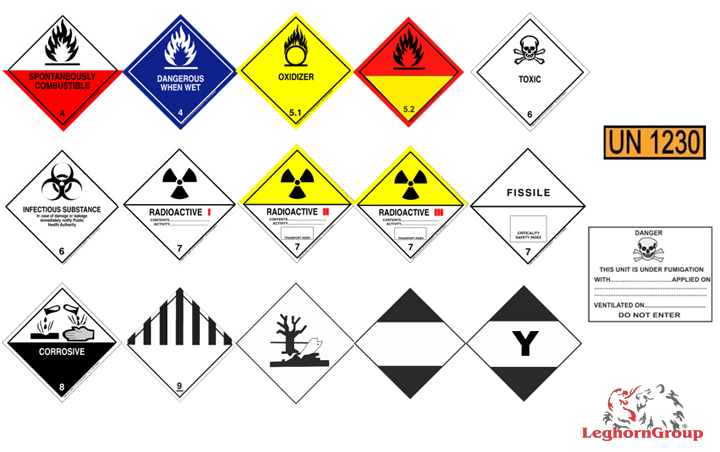
Hazard labels for dangerous goods
Classes 1-9 of dangerous goods explained The classes are part of the United Nations-based system of identifying dangerous goods, and are used within many different subsystems such as the ADR, RID, IMDG and DGR for classifying dangerous goods and hazardous materials. Class 1 Explosive substances and articles Class 1 contains substances and articles which pose a hazard due to explosion. Segregating Dangerous Goods under the IMDG Code Aug 09, 2021 · Step 2 – Consult Segregation Requirements in the Dangerous Goods List. Just because two classes in general don’t require segregation doesn’t mean that two specific substances in those classes are in the clear. Our next step is to go to the Dangerous Goods List in Volume 2 of the IMDG Code, and check column 16b, headed “Segregation.” Hazardous chemicals and dangerous goods | WorkSafe.qld.gov.au Dangerous goods (DG) is the name given to the group of chemicals and articles (i.e. goods) classified as dangerous for transport by road, rail, air or sea. ... Section 2.4 of the Labelling of workplace hazardous chemicals code of practice 2011 states that GHS hazard pictograms (red, white and black diamonds) may be substituted by the equivalent ...
Hazard labels for dangerous goods. Marking and Labelling of Dangerous Goods - chemsafetypro.com Labelling: mainly means hazard symbols (and handling labels) displayed on small means of packages (usually less than 450 liters) ; Example of Dangerous Goods Marking and Labeling The picture below shows how a dangerous goods package should be marked and labelled. Limited Quantity and Excepted Quantity Marking Hazard Labels for Dangerous Goods | Air Sea Containers Types of dangerous goods labels The hazard classes range from Class 1 to Class 9. Class 1 - Explosives Class 2 - Gases Class 3 - Flammable Liquids Class 4 - Flammable Solids Class 5 - Oxidizing Substances Class 6 - Toxic & Infectious Substances Class 7 - Radioactive Materials Class 8 - Corrosives Class 9 - Miscellaneous Dangerous Goods › cdg › manualCarriage of Dangerous Goods Manual - Classification - HSE This means that all dangerous goods, not just those directly assigned UN 3077 (solids) or UN 3082 (liquids), meeting the relevant criteria will be regarded as environmentally hazardous substances and required to show the "dead fish and tree" mark. The requirements for the mark mirror the provisions for labels and placards (ADR 5.2.1.8 and 5.3.6). How to label dangerous goods | Germany - fedex.com Labeling and marking dangerous goods shipments correctly not only helps avoid delays or fines, but is also essential for preventing safety hazards. Remember to also check which laws and regulations apply, and your carrier's requirements, before shipping. Place all dangerous goods labels on one side of the box
Hazard class labels - ADR and IMO - LeghornGroup We have a wide range of hazard warning diamonds (Haz-Chem Labels) which are typically available in 48 hours from the order. These ADR and IMO adhesive hazard class labels include all classes of hazard and flammability, Environmentally Hazardous labels and those related to the danger to marine pollution according to IMDG regulations. eur-lex.europa.eu › legal-content › enEUR-Lex - 32008R1272 - EN - EUR-Lex - Europa Workers and consumers worldwide would benefit from a globally harmonised hazard communication tool in the form of labelling. Therefore, the elements to be included in labels should be specified in accordance with the hazard pictograms, signal words, hazard statements and precautionary statements which form the core information of the GHS. Miscellaneous Dangerous Goods Labels from Labelmaster Miscellaneous Dangerous Goods Label, PVC-Free Film, Roll of 500. Item No. HMSL90. $74.30 $126.45. Add to Cart. Miscellaneous Dangerous Goods Label, Paper, Roll of 500. Item No. HML9. $22.97 $51.78. Add to Cart. Miscellaneous Dangerous Goods Label, Polypropylene for UV Exposure, Roll of 500. Labels (GHS) | UNECE For hazard communication elements (labels and marks) applicable to other transport classes or transport conditions covered by transport of dangerous goods regulations but not addressed in the GHS (e.g. labels for classes 7 and 9; elevated temperature substance mark; lithium battery mark; etc) refer to Part 5 of the United Nations ...
Marking & Labeling Your Shipment - Federal Aviation Administration Labeling Labels identify the specific primary and subsidiary hazards posed by the materials in a dangerous goods package. These methods of communication rely on specific colors, codes, and pictograms to clearly and immediately identify the type of materials in the package. Dangerous goods - Wikipedia Dangerous goods, abbreviated DG, are substances that when transported are a risk to health, safety, property or the environment.Certain dangerous goods that pose risks even when not being transported are known as hazardous materials (syllabically abbreviated as HAZMAT or hazmat).An example for dangerous goods is hazardous waste which is waste that has … › dg-packaging-labelsDangerous Goods Labels/Packaging Labels Archives - Labeline.com All our range of Dangerous Goods Labels Comply with International Dangerous Goods Regulations for IATA, ICAO, IMDG, ADR,CFR DG Label Tests & Compliance When you purchase dangerous goods hazard labels you should check and test that they comply with BS5609 specification and regulation standards. Dangerous goods classes and hazard labels - Civil Aviation … Hazard labels for dangerous goods. These labels must be clearly visible on the outside of the package and must stay on the package while it’s in transit. The labels are often printed on most inner packages such as aerosol cans, bottles of bleach, containers of thinners, tins of paint, and many other products which are available at ...
en.wikipedia.org › wiki › Dangerous_goodsDangerous goods - Wikipedia Dangerous goods are assigned to UN numbers and proper shipping names according to their hazard classification and their composition. Dangerous goods commonly carried are listed in the Dangerous Goods list. Examples for UN numbers and proper shipping names are: 1202 GAS OIL or DIESEL FUEL or HEATING OIL, LIGHT; 1203 MOTOR SPIRIT or GASOLINE or ...
Dangerous Goods Labeling & Marking Guide | Klinge Corp Dangerous goods transport labels communicate the primary hazards posed by the dangerous goods. People handling dangerous materials can immediately identify any hazardous materials in the package through colors, codes and pictograms such as hazard symbols or handling labels.
Hazmat Shipping Labels, DOT Placards, UN Packaging from … dangerous goods products for every mode From industry-leading online training to regulatory publications , from hazmat labels and DOT placards to a complete selection of UN-certified packaging and lithium battery packaging , Labelmaster offers all the essential products you need to help keep shipments compliant and safe.
Labels for dangerous goods and hazardous substances | HERMA Labels for hazardous substances and dangerous goods must stick firmly to containers of all kinds: barrels, drums, canisters, shipping containers, IBCs, FIBCs, bottles and pallets. The surfaces, which can be metal, plastic, glass or wood, have many different requirements.
› imdg-codeThe IMDG Code - IMO Dangerous Goods Regulations from Labelmaster The IMDG Code is the global, international reference for shipping dangerous goods by maritime vessel on the water. The 2-volume IMO DG regulations is required for anyone shipping DG by water and features updates and revisions regarding packaging and storage requirements for all regulated hazardous materials.
› segregatingSegregating Dangerous Goods under the IMDG Code Aug 09, 2021 · Step 2 – Consult Segregation Requirements in the Dangerous Goods List. Just because two classes in general don’t require segregation doesn’t mean that two specific substances in those classes are in the clear. Our next step is to go to the Dangerous Goods List in Volume 2 of the IMDG Code, and check column 16b, headed “Segregation.”
laws-lois.justice.gc.ca › eng › regulationsTransportation of Dangerous Goods Regulations PART 4 Dangerous Goods Safety Marks Requirements for Dangerous Goods Safety Marks. 4.1 A person must not offer for transport, transport or import a means of containment that contains dangerous goods unless each dangerous goods safety mark required by this Part and illustrated in the appendix to this Part, or illustrated in Chapter 5.2 or 5.3 of the UN Recommendations, is displayed on it in ...
IATA Dangerous Goods Hazards and Handling Labels Poster, Poster These labels must be used on packages containing dangerous goods that are being shipped by air. The labels of the primary and secondary hazards of all nine dangerous goods classes are shown. Labeline operates a price match policy on this product. Contact our sales department for more information. £ 25.00 Add to basket
DOT Hazmat Labels, Placards, and Markings - A Guide Hazard Class 1 - Explosives Hazard Class 2 - Gases Hazard Class 3 - Flammable and Combustible Liquids Hazard Class 4 - Flammable Solids Hazard Class 5 - Oxidizing Substances, Organic Peroxide Hazard Class 6 - Toxic Subtances and Infectious Substances Hazard Class 7 - Radioactive Material Hazard Class 8 - Corrosives (Liquids and Solids)
EUR-Lex - 32008R1272 - EN - EUR-Lex - Europa Workers and consumers worldwide would benefit from a globally harmonised hazard communication tool in the form of labelling. Therefore, the elements to be included in labels should be specified in accordance with the hazard pictograms, signal words, hazard statements and precautionary statements which form the core information of the GHS.
The IMDG Code - IMO Dangerous Goods Regulations from … The IMDG Code is the global, international reference for shipping dangerous goods by maritime vessel on the water. The 2-volume IMO DG regulations is required for anyone shipping DG by water and features updates and revisions regarding packaging and storage requirements for all regulated hazardous materials.. Adopted in the 1965; Formed to prevent all types of sea pollution
A Guide to Hazard Labels | Air Sea Containers Types of dangerous goods labels The hazard classes range from Class 1 to Class 9. Class 1 - Explosives Class 2 - Gases Class 3 - Flammable Liquids Class 4 - Flammable Solids Class 5 - Oxidizing Substances Class 6 - Toxic & Infectious Substances Class 7 - Radioactive Materials Class 8 - Corrosives Class 9 - Miscellaneous Dangerous Goods
Transportation of Dangerous Goods Regulations Misleading Dangerous Goods Safety Marks. 4.2 (1) As provided for in section 6.1 of the Act, a person must not display a dangerous goods safety mark on a means of containment or a means of transport if the mark is misleading as to the presence or nature of any danger. (2) As provided for in section 6.1 of the Act, a person must not display a mark other than a dangerous goods …
Hazard Class 9 - Hazmat Labels from Labelmaster Available in International Wordless, Personalized with a Shipping Name, Pre-Printed or with Blank tabs, these labels are ideal when transporting Dangerous Goods such as dry ice, ammonium nitrate fertilizers, lithium ion batteries, vehicles and first aid kits. There's no need to waste any time worrying about your shipping labels.
Information on hazardous chemical labels | Safe Work Australia Pictograms and text on the label should be clear. The label must also be firmly fixed to the hazardous chemical's container. It should not be hidden or in a spot where it could be removed, such as on the lid. The label must include the: product identifier. manufacturer's or importer's name, Australian address and business telephone number.
Dangerous Goods Labels | Labels Online ADR regulations require all packages containing dangerous goods to have a warning label and that the label shall be in the form of a square at an angle of 45° (diamond shaped). All our Dangerous Goods Labels fully comply with IATA/ ICAO, UN ADR/RID and IMDG/IMO requirements and the base material conforms with BS 5609:1986.
Dangerous Goods Safety Marks - Transport Canada A dangerous goods safety mark can be a label, placard, orange panel, sign, mark, letter, word, number or abbreviation, or any combination of these things. Dangerous goods safety marks are displayed on a means of containment to identify dangerous goods and to show the nature of the danger they pose.
Hazardous chemicals and dangerous goods | WorkSafe.qld.gov.au Dangerous goods (DG) is the name given to the group of chemicals and articles (i.e. goods) classified as dangerous for transport by road, rail, air or sea. ... Section 2.4 of the Labelling of workplace hazardous chemicals code of practice 2011 states that GHS hazard pictograms (red, white and black diamonds) may be substituted by the equivalent ...
Segregating Dangerous Goods under the IMDG Code Aug 09, 2021 · Step 2 – Consult Segregation Requirements in the Dangerous Goods List. Just because two classes in general don’t require segregation doesn’t mean that two specific substances in those classes are in the clear. Our next step is to go to the Dangerous Goods List in Volume 2 of the IMDG Code, and check column 16b, headed “Segregation.”
Classes 1-9 of dangerous goods explained The classes are part of the United Nations-based system of identifying dangerous goods, and are used within many different subsystems such as the ADR, RID, IMDG and DGR for classifying dangerous goods and hazardous materials. Class 1 Explosive substances and articles Class 1 contains substances and articles which pose a hazard due to explosion.
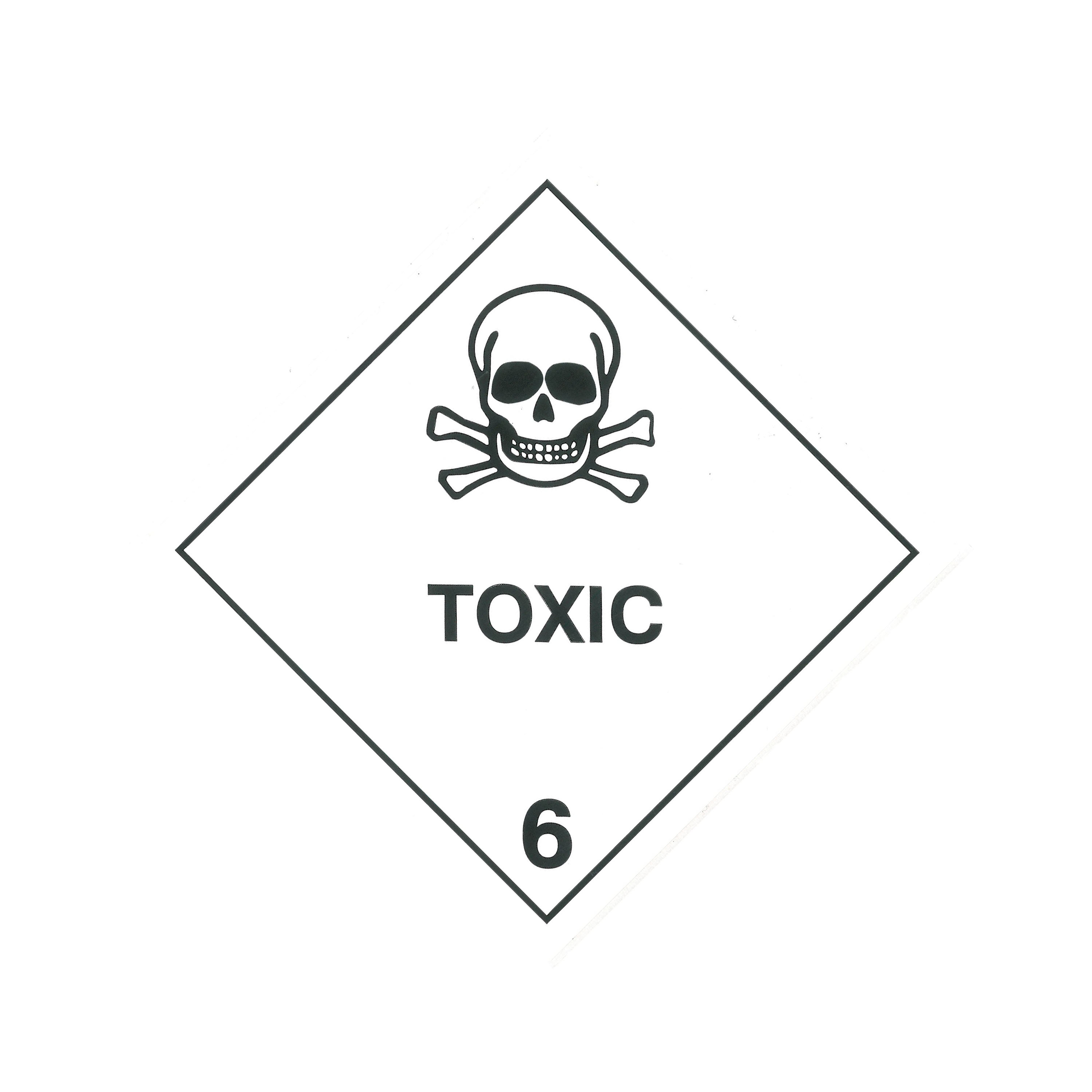

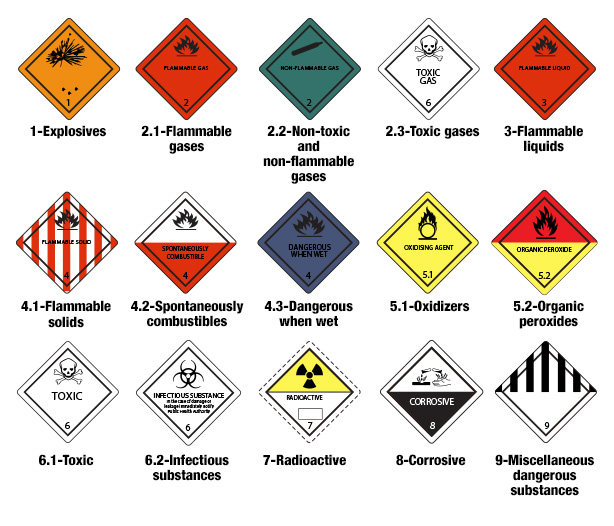
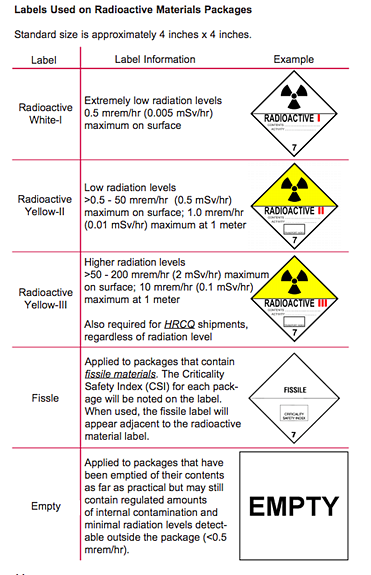
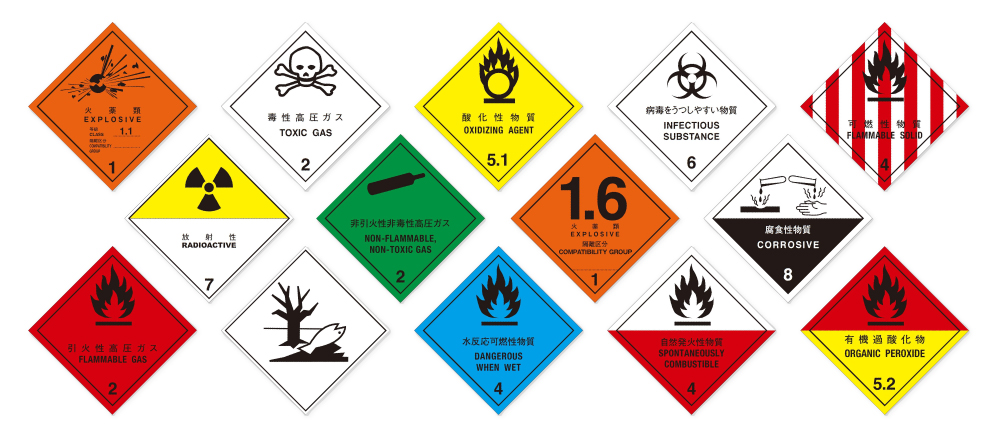



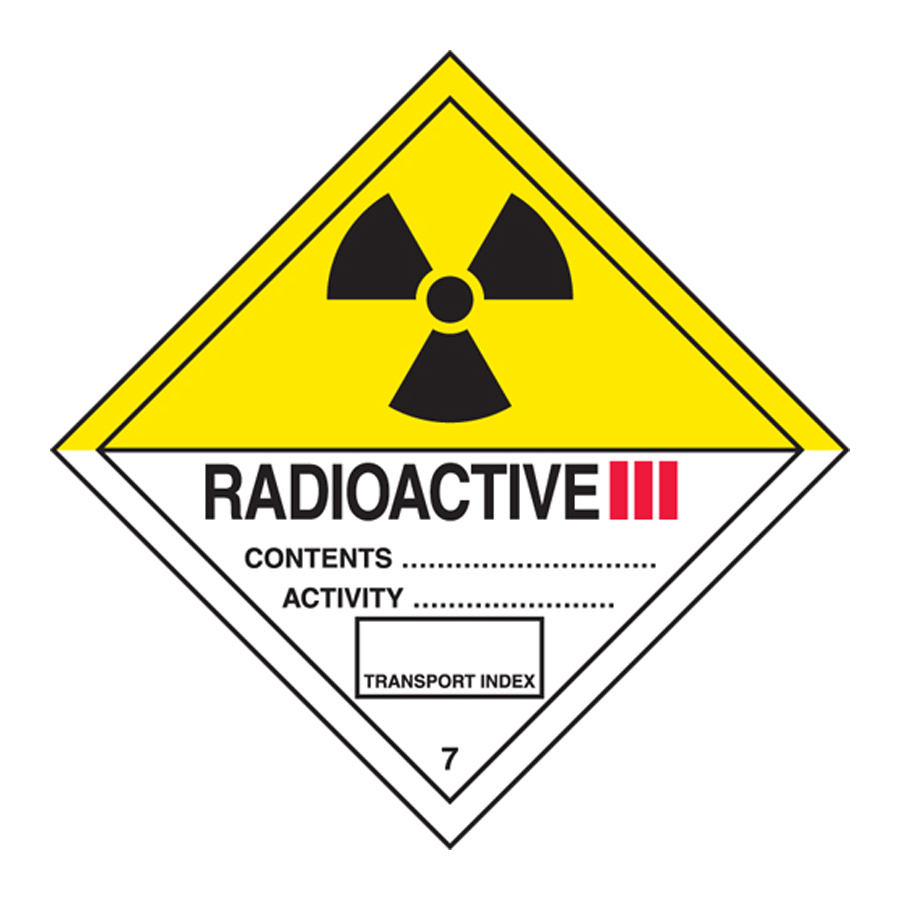




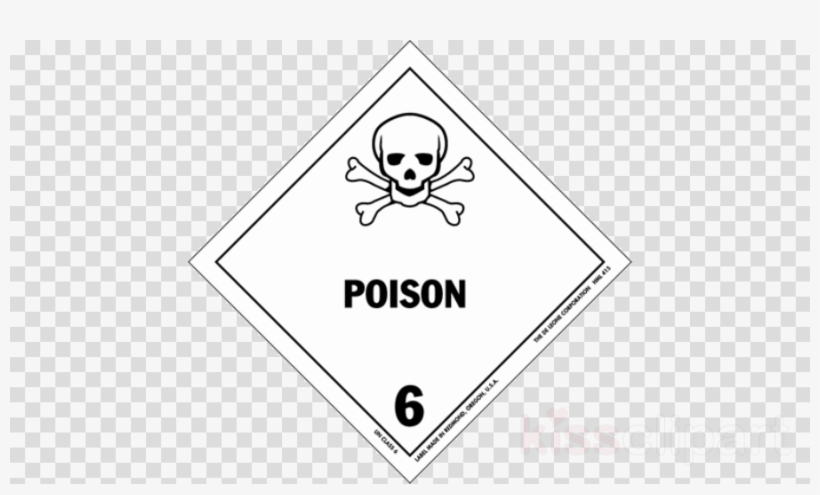
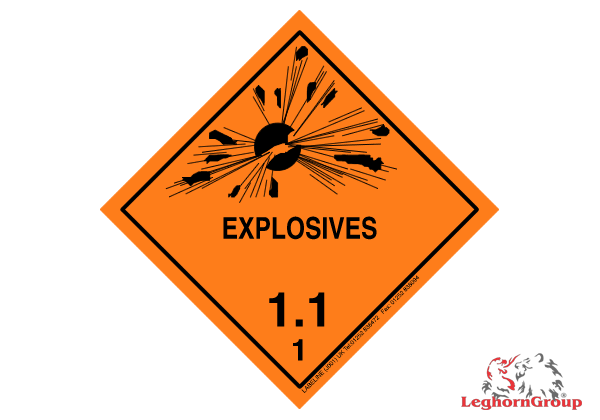
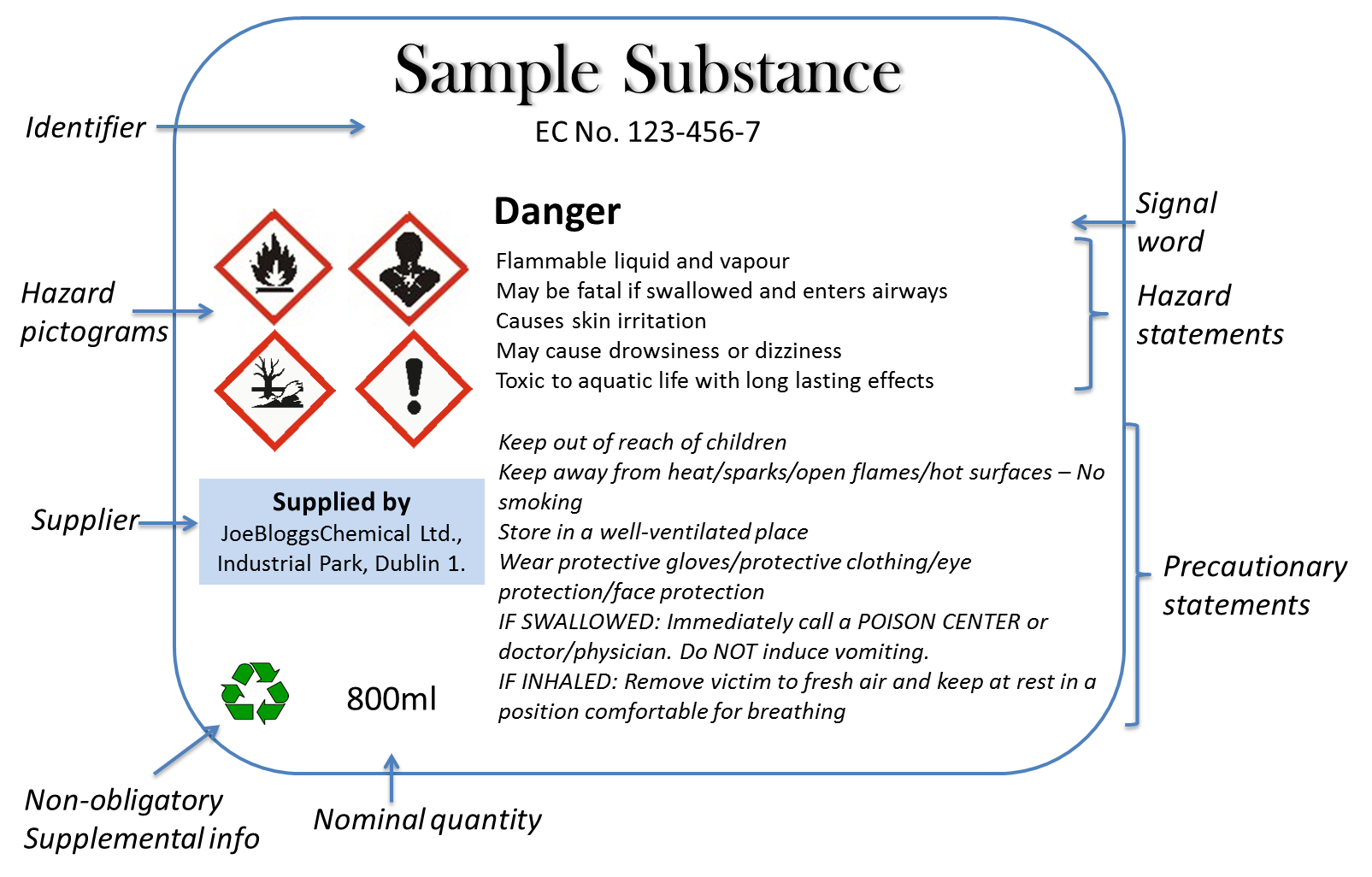


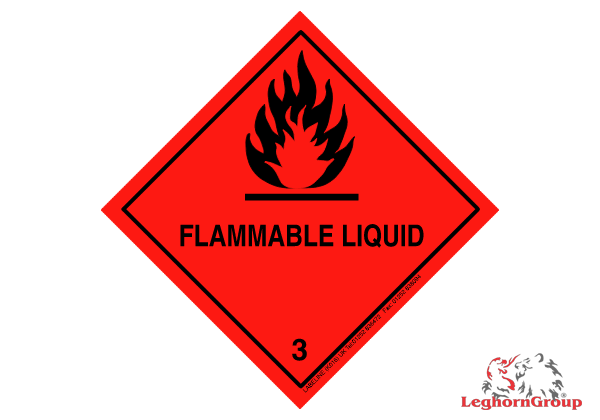


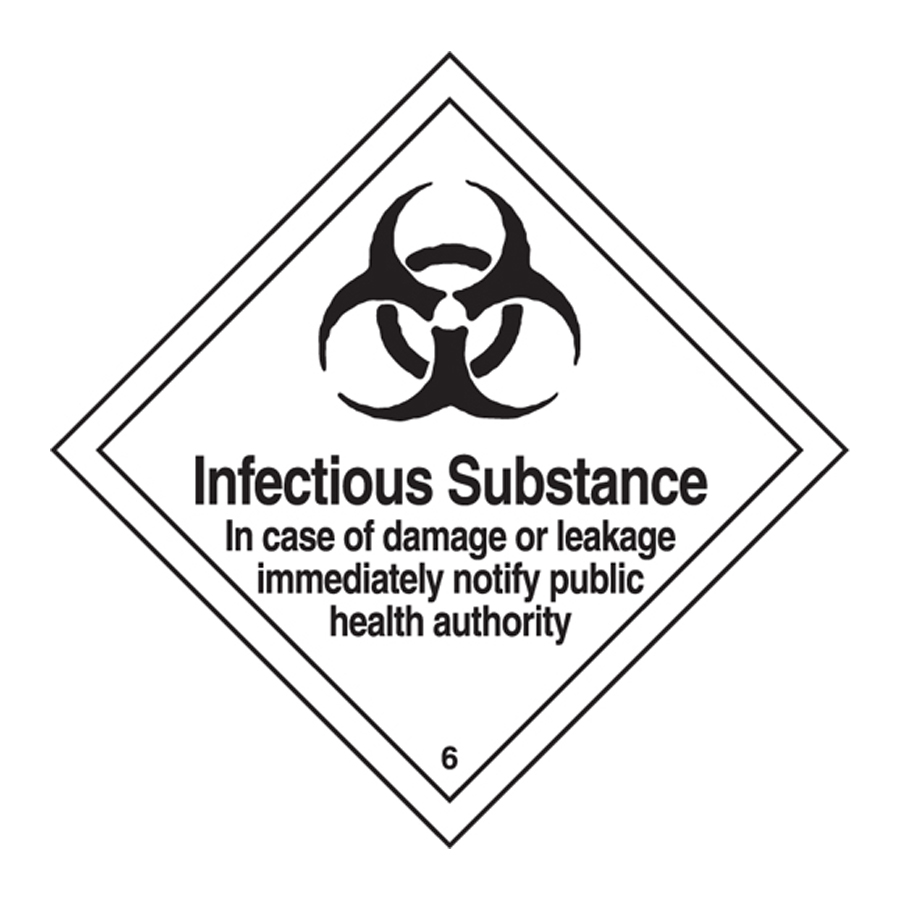



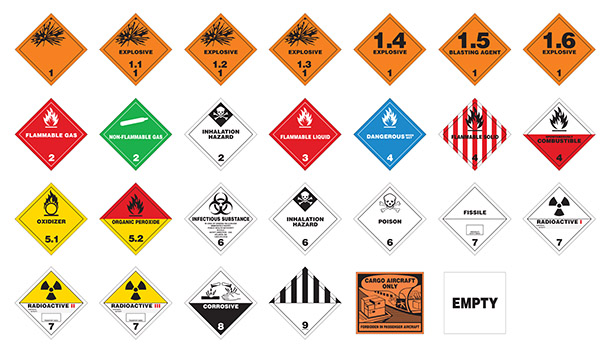

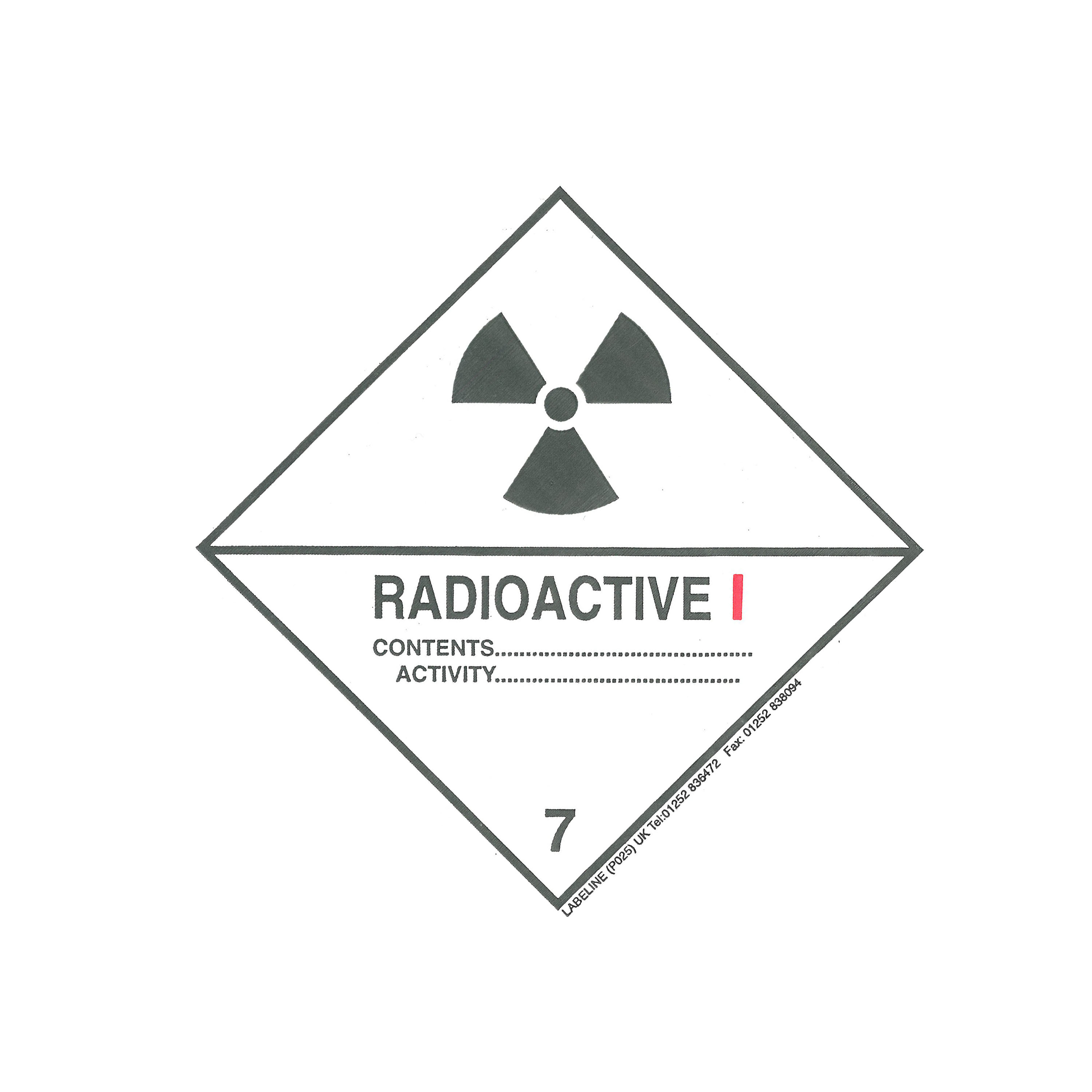


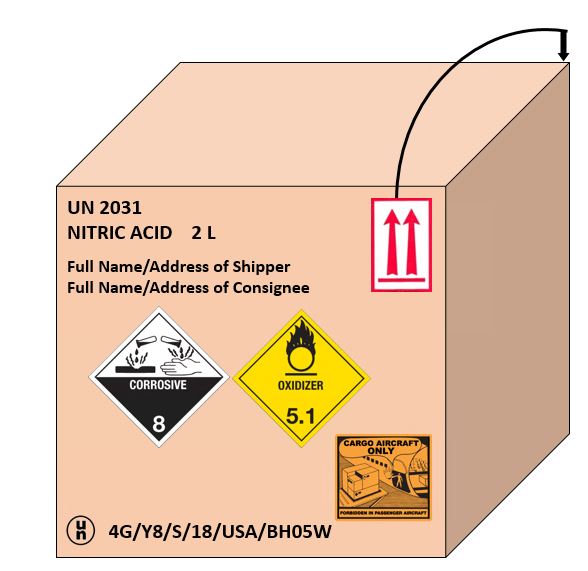
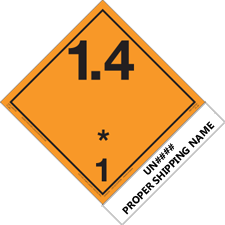


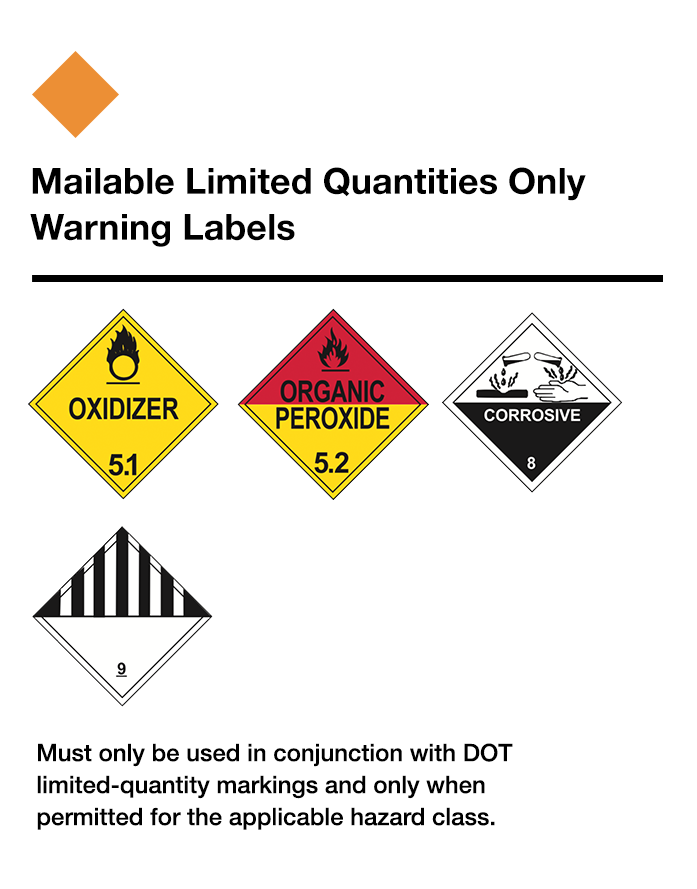

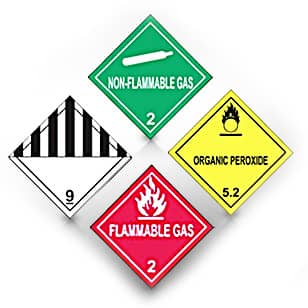

Post a Comment for "41 hazard labels for dangerous goods"